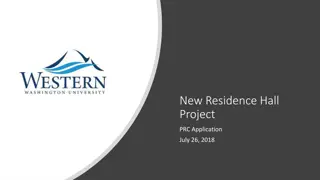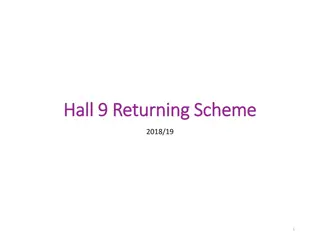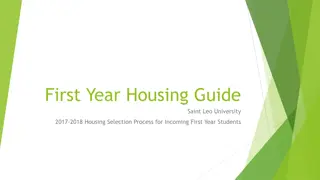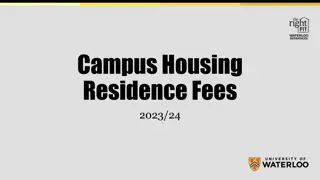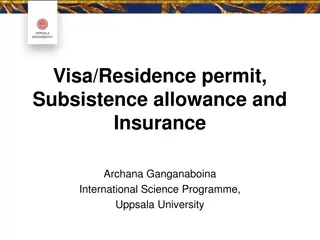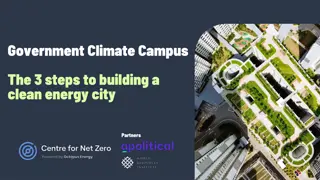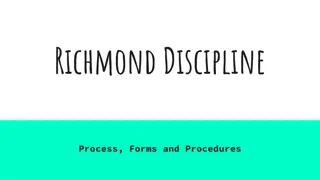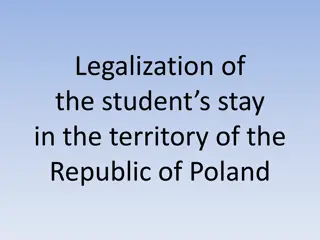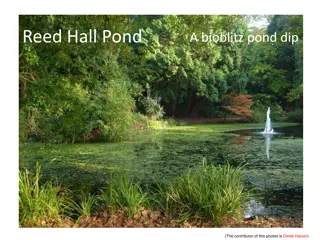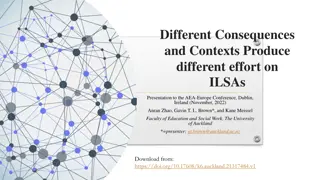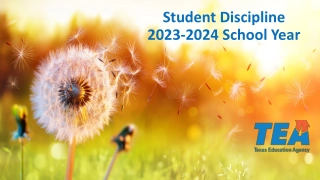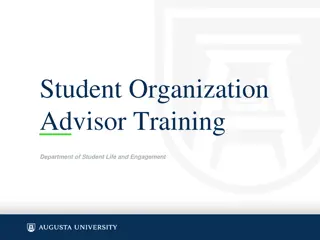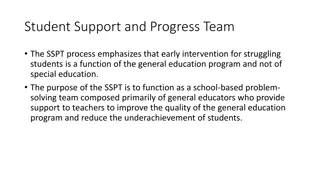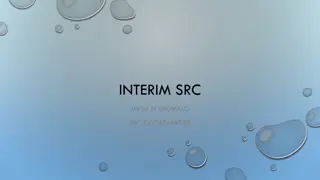Exploring Student Residence Hall Ambiance: Consequences and Typologies
Colleges and universities invest significantly in campus infrastructure, yet concerns about student mental health persist. Research examines how room ambiance affects well-being, identity representation, and productivity. Various aspects of ambiance congruency are analyzed over different time points in this study, focusing on factors like productivity, privacy, fun, friendship, creativity, and more.
Download Presentation

Please find below an Image/Link to download the presentation.
The content on the website is provided AS IS for your information and personal use only. It may not be sold, licensed, or shared on other websites without obtaining consent from the author. Download presentation by click this link. If you encounter any issues during the download, it is possible that the publisher has removed the file from their server.
E N D
Presentation Transcript
Exploring Student Residence Hall Ambiance: Consequences and Typologies Presented by: Benjamin R. Meagher
Introduction Colleges and universities invest millions of dollars developing and maintaining buildings and common spaces on their campuses
Introduction Colleges and universities invest millions of dollars developing and maintaining buildings and common spaces on their campuses At the same time, there is growing concern about the mental health crisis on campuses
Introduction Colleges and universities invest millions of dollars developing and maintaining buildings and common spaces on their campuses At the same time, there is growing concern about the mental health crisis on campuses Psychological research on the relationship between campus infrastructure and student well-being has primarily focused on belonging Representation of student identities (Bilewicz & Klebaniuk, 2013; Kirby et al., 2020) Structural design of rooms (Brown et al., 2019; Devlin et al., 2008) Room locations within buildings (Festinger et al., 1950)
Introduction Occupants are not passive -- Individuals can create spaces that reflect particular ambiances (Gosling et al., 2002; Graham et al., 2015) Relaxation and rejuvenation Studying and productivity Socializing with friends Stimulation and excitement Etc. How critical is room ambiance to student mental health?
Ambiance Congruency Time 1 2021 Fall Semester: September 2022 198 undergraduates recruited (163 retained for analysis) 67% 1st year, 21% 2nd year, 11% 3rd year, 1% 4th year Time 2 November 2022 2022 Spring Semester: 75 pairs (n = 150) of undergraduate roommates 64% 1st year, 34% 2nd year, 2% 3rd year Time 3 February 2023 2022-2023 Academic Year: Time 4 April 2023 84 pairs (n = 168) of first year roommates
Ambiance Congruency Q-Sort Procedure Description of ideal room Description of actual room Productivity Privacy Fun Friendship Congruency score computed with correlation coefficient Creativity Entertaining Inviting Calm Community Uniqueness Beauty Excitement Learning Organization Safety Relaxation Self- Spirituality Inspirational Intimacy Cleanliness Comfort Quiet Expression Not at all important Not very Important Slightly Important Somewhat Important Moderately Important Very Extremely Important Important
Ambiance Congruency Ambiance congruency is negatively associated with depressive symptoms, anxiety symptoms, and frequency of negative emotions. True even when controlling for: Demographics Big 5 Personality Traits Academic satisfaction Sense of connection with the school Physical health It was not associated with frequency of positive emotions Roommate s scores did not predict mental health (just satisfaction)
Ambiance Congruency Evidence that room ambiance changes for the better following periods of high stress (controlling for current stress) Previous Ambiance Congruency Current Ambiance Congruency Previous Stress Current Stress
Identifying Room & Student Types Inverted Factor Analysis Productivity Actual Rooms on Campus: Group 1: Group 2: Group 3: Peaceful Solitude Entertaining Fun Quiet Creativity Community Inviting Friendship Safety Uniqueness Beauty Excitement Learning Organization Calm Comfort Self- Spirituality Inspirational Intimacy Cleanliness Privacy Relaxation Expression
Identifying Room & Student Types Inverted Factor Analysis Self- Expression Actual Rooms on Campus: Group 1: Group 2: Group 3: Peaceful Solitude Fun Social Activity Organization Calm Relaxation Quiet Privacy Productivity Entertaining Comfort Inspirational Beauty Uniqueness Cleanliness Safety Community Friendship Spirituality Intimacy Learning Creativity Excitement Inviting Fun
Identifying Room & Student Types Inverted Factor Analysis Beauty Actual Rooms on Campus: Group 1: Group 2: Group 3: Peaceful Solitude Fun Social Activity Personal Control Quiet Productivity Safety Excitement Community Privacy Cleanliness Organization 23% 44% Spirituality Entertaining Uniqueness Creativity Relaxation Inviting Comfort 33% Self- Intimacy Inspirational Learning Fun Calm Friendship Expression
Identifying Room & Student Types Inverted Factor Analysis Productivity Ideal Room Preferences: Group 1: Group 2: Group 3: Peaceful Solitude Community Inviting Calm Self- Intimacy Entertaining ExpressionOrganization Privacy Inspirational Excitement Creativity Fun Quiet Safety Comfort Spirituality Uniqueness Beauty Learning Friendship Cleanliness Relaxation
Identifying Room & Student Types Inverted Factor Analysis Organizatio n Ideal Room Preferences: Group 1: Group 2: Group 3: Peaceful Solitude Social Activity Calm Fun Inviting Beauty Quiet Learning Relaxation Safety Self- Intimacy Spirituality Excitement ExpressionProductivity Community Friendship Inspirational Uniqueness Creativity Entertaining Privacy Cleanliness Comfort
Identifying Room & Student Types Inverted Factor Analysis Cleanliness Ideal Room Preferences: Group 1: Group 2: Group 3: Peaceful Solitude Social Activity Expressive Fun Organization Calm Safety Beauty Productivity Creativity Privacy Fun 18% 45% Learning Intimacy Uniqueness Community Inviting Entertaining Comfort 37% Self- Spirituality Inspirational Quiet Excitement Friendship Relaxation Expression
Identifying Room & Student Types Actual Rooms on Campus: Group 1: Group 2: Group 3: 23% Peaceful Solitude Fun Social Activity Personal Control 31% 17% 7% 36% 60% 66% 33% 28% Group 1: Peaceful Solitude Group 2: Social Activity Ideal Room Preferences Group 3: Expressive Fun
General Discussion Across the three studies, we see evidence that actual-ideal ambiance congruency is associated with mental health Reductions in stress co-occurs with improved room ambiance Students seem to differ primarily in terms of how much they prioritize and experience social activity, peace/quiet, and self-expression.
Thanks! Undergraduate Researchers: Brynn Anderson Kayla Brady Elliana Hamilton Nhi Hoang Emma Kane Tyler Kennedy Lauren Quillan Isabel Santos Kate Yakes Alyssa Cheadle Loren Toussaint Christine Guardino


